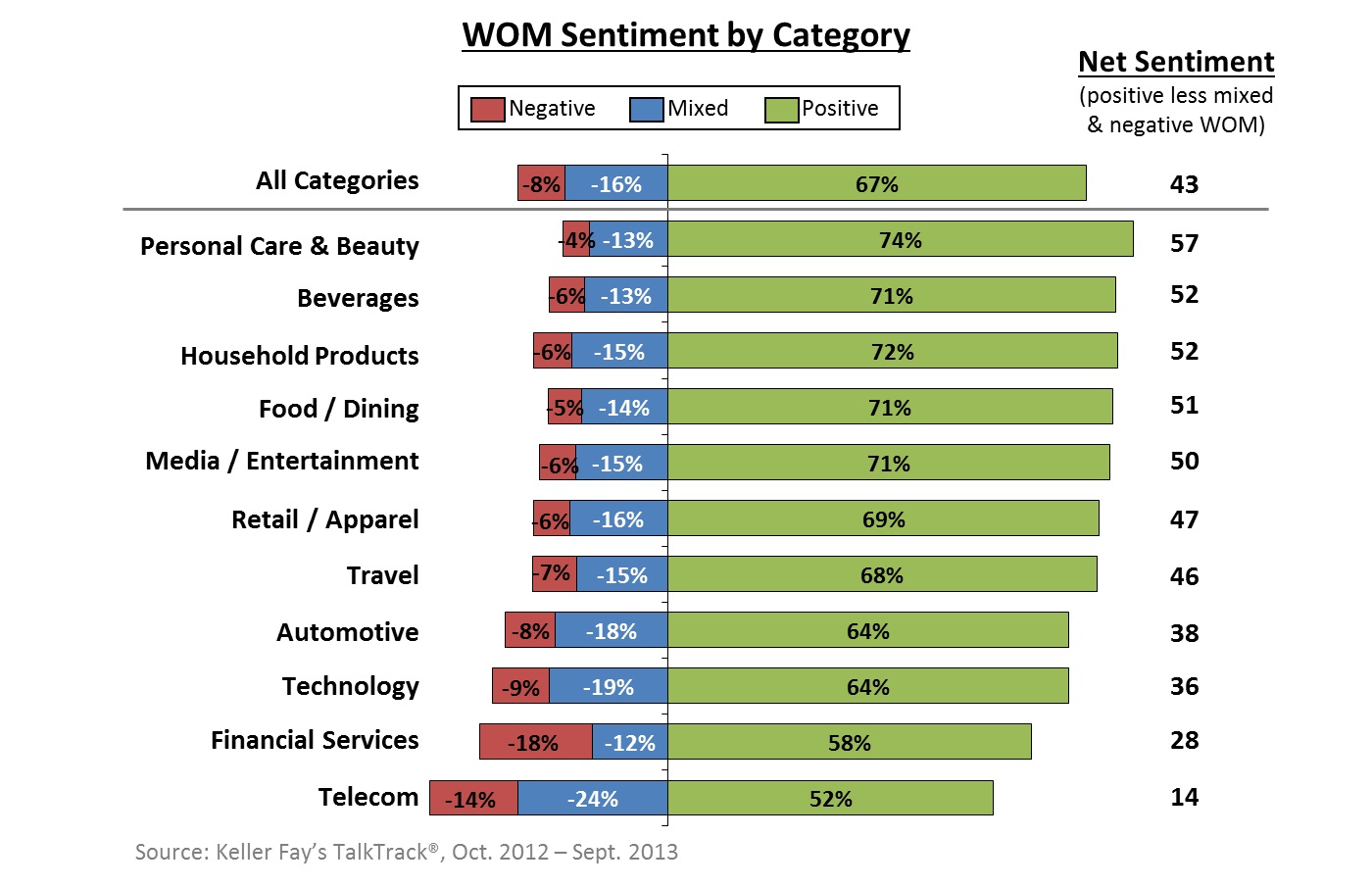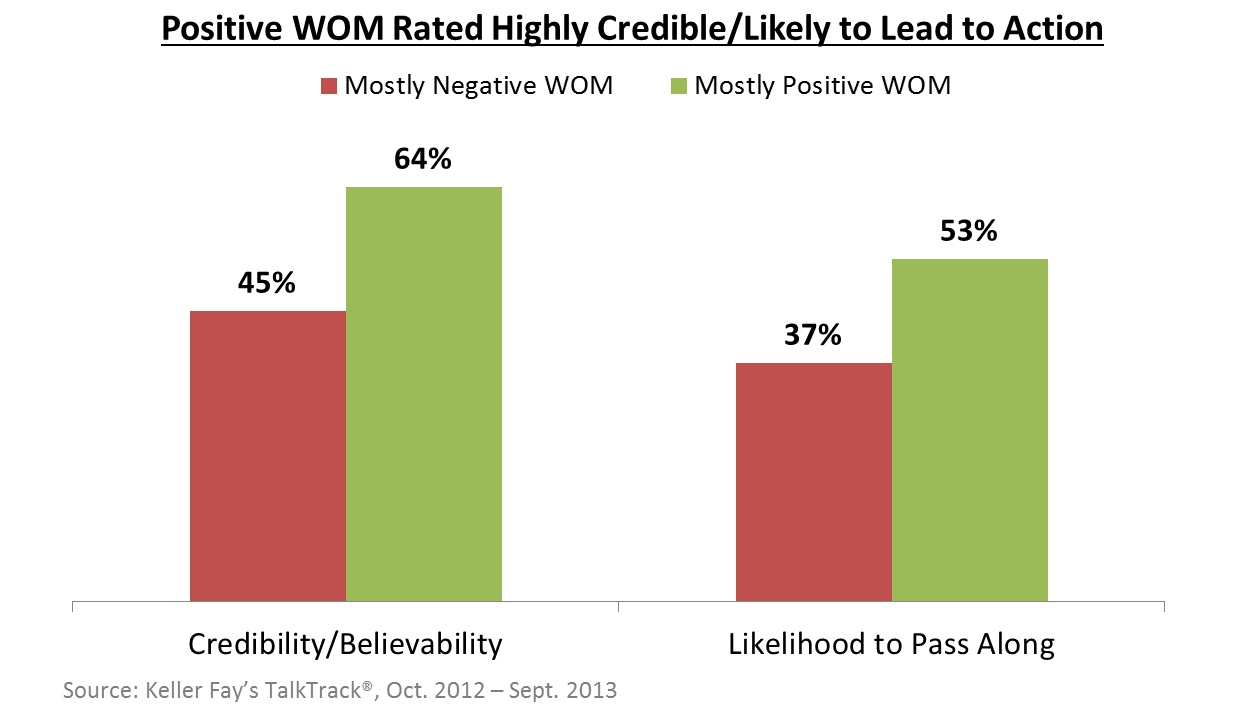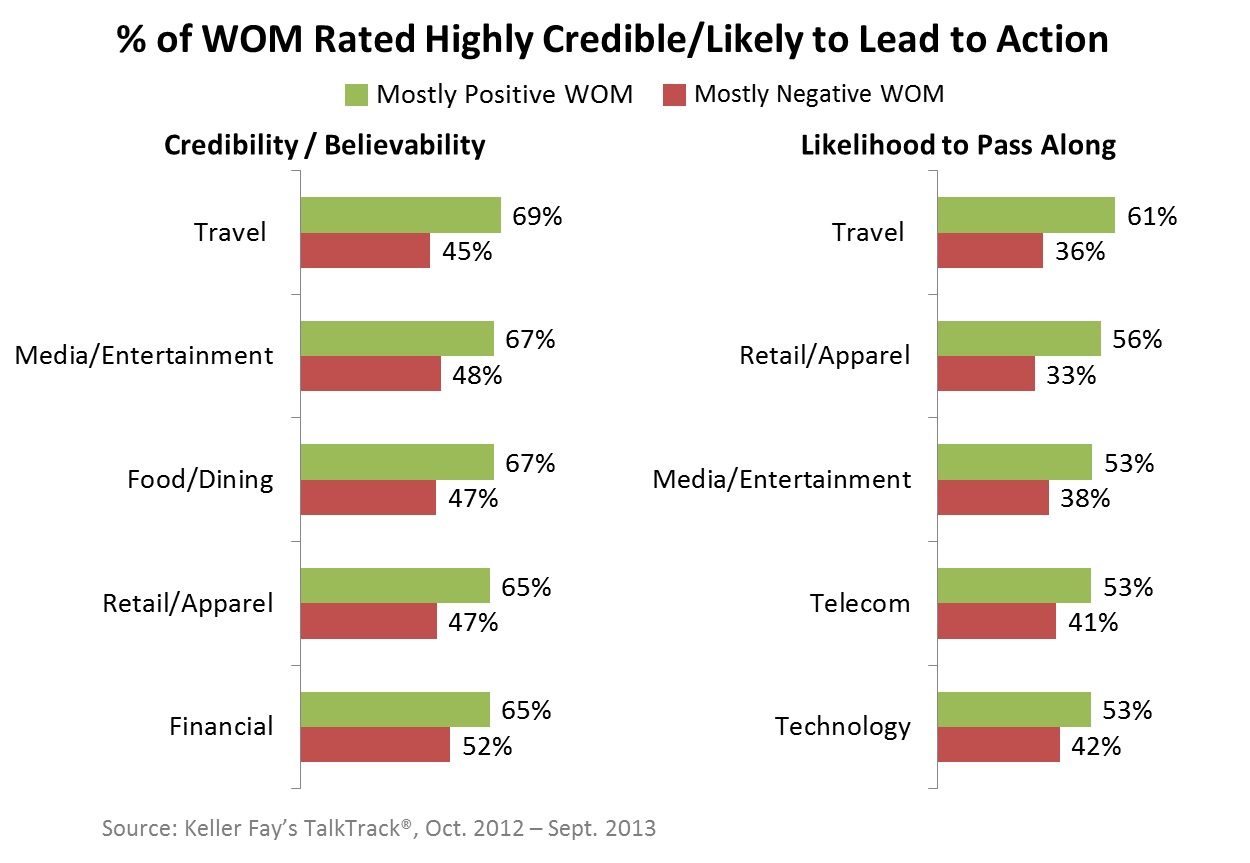Busting the Myth that Negative WOM is More Powerful than Positive Talk -- Ed Keller

Everyone, it seems, has heard that people are far more likely to share their bad brand experiences than positive ones. Probe further about whether they have actually seen evidence of that, and the answer is generally, “No, but I’ve heard it’s true.”
Well, the fact is, it’s not true. Positive WOM is far more prevalent than negative WOM, and has a greater impact. For brands, there is far more to be gained than feared by being part of organic consumer conversation.
To start, more than two-thirds of all brand-related WOM is generally positive in nature, while less than 10% is generally negative. That’s over eight times more positive than negative WOM. And what’s more, positive WOM is even more prevalent in key product categories, topping out at nearly 75% for personal care and beauty. Even a more polarizing category, like telecom, earns over 50% positive WOM, versus 14% negative.

Positive WOM: More Credible and More Viral
Having established that the majority of WOM is far more positive than negative, the question is then, which has more impact?
The short answer is that positive WOM is usually more powerful than negative WOM -- and by a wide margin. Two thirds of people exposed to positive WOM describe it as “highly credible”; less than half of negative WOM is seen in the same light.
We also find that word of mouth recipients are more likely to indicate they will tell other people what they have heard when word of mouth is positive (53%) versus negative (37%).
Of course there can be exceptions to this rule, as some dramatic case studies have shown. Blog posts like “Dell Hell” and viral videos like “United Breaks Guitars” have won huge audiences. But the data shows these are exceptions rather than common occurrences.

Effect of Positive WOM in Key Categories
There are, of course, differences by product category when it comes to positive and negative WOM. The chart shows the Top 5 categories where positive WOM is rated even more credible and likely to be passed along. Leading the list in both cases is travel: Nearly 70% of positive travel-related WOM is deemed credible, while over 60% is likely to lead to the information being passed along to others.

The reason people engage in WOM is to make the best decisions about what products or services to buy. They seek out and act on the advice they get; overwhelmingly that leads to positive WOM, which in turn is what people share with others.
Ed Keller, CEO of the Keller Fay Group, has been called "one of the most recognized names in word of mouth." His new book, The Face-to-Face Book: Why Real Relationships Rule in a Digital Marketplace, was recently published by Free Press/Simon & Schuster. You can follow Ed Keller on Twitter, Facebook and Google+, or contact him directly at ekeller@kellerfay.com.
word of mouth." His new book, The Face-to-Face Book: Why Real Relationships Rule in a Digital Marketplace, was recently published by Free Press/Simon & Schuster. You can follow Ed Keller on Twitter, Facebook and Google+, or contact him directly at ekeller@kellerfay.com.
Read all Ed’s MediaBizBloggers commentaries at WOM Matters.
Check us out on Facebook at MediaBizBloggers.com
Follow our Twitter updates at @MediaBizBlogger
The opinions and points of view expressed in this commentary are exclusively the views of the author and do not necessarily represent the views of MediaBizBloggers.com management or associated bloggers. MediaBizBloggers is an open thought leadership platform and readers may share their comments and opinions in response to all commentaries.


